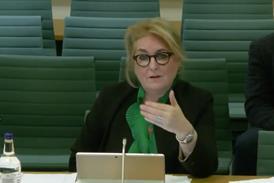We approach the first anniversary of the RTA whiplash portal with some people’s worst fears starting to be realised. Claims numbers are well down on pre-Covid numbers, claimant lawyers are finding it nigh-on impossible to submit cases in any great number and the number of firms doing this kind of work has fallen dramatically.
For the insurance industry, it’s worked like a charm.
The numbers this week confirm just why insurers are so pleased with the first 12 months of Official Injury Claim. For 2019/20, the Ministry of Justice estimates that 680,000 lower-value RTA claims were made. Last year there are thought to have been around 400,000 (including those filed outside of the portal).
Of the 243,000 claims lodged with Official Injury Claim, just 23,000 have progressed to settlement. Liability has been admitted in most cases, but taking the next step has proven difficult, as thousands wait for a medical diagnosis (now mandatory) and half of claimants with injuries in addition to whiplash are left in limbo while a test case is selected to work out this issue. Hybrid claims were always going to be a problem when tariffs restricted and reduced compensation and it seems faintly ridiculous we are no nearer to finding a solution a year on from the portal’s launch.
Claimant and defendant sides mostly agree that the Motor Insurers’ Bureau is doing its best, but the technology is simply not working for firms doing volume work.
Insurers will be delighted with year one of the portal – especially considering the claims that do get through are so much less costly due to the new tariff. They have even been handed a ready-made excuse for not passing on savings due to wider economic uncertainty. If ministers ever bother to ask where the savings went, insurers will no doubt insist they would have loved to pass on the promised £35 to each customer, if only the market had allowed it.
The MoJ is reasonably happy with how the portal has worked, in the same way that a parent might sneak upstairs leaving the kids to fight downstairs and then congratulate themselves on a job well done.
For all its faults, the idea of automated settlement through an online claims system is admired and coveted by the senior judiciary, who sense an opportunity to develop online resolution for the rest of the civil system.
The question now facing insurers is whether things could get even better.
The industry is paying for the portal essentially on the basis that a good chunk of people would be forced to do without a lawyer and would need help. Like a property developer offering to build a community centre in return for permission to build a 50-storey skyscraper, this was a quid pro quo arrangement with the government.
Except in this case, the community centre is a white elephant. The portal was designed to cater for litigants in person and – at most – just 9% of claimants are using it without a lawyer.
To put into language they might understand, insurers have bought travel cover at great expense, only for everyone to refuse to leave home.
If litigants continue to shun the DIY approach, you start to wonder what this portal was for and why insurers are paying so much (they won’t say how much) into it.
The first year of OIC could not have worked out much better for the insurers, but there is always more to be gained. The MoJ has left itself beholden to the insurer handout – they had better hope those backers don’t start asking what exactly they’re getting for their investment.


































3 Readers' comments